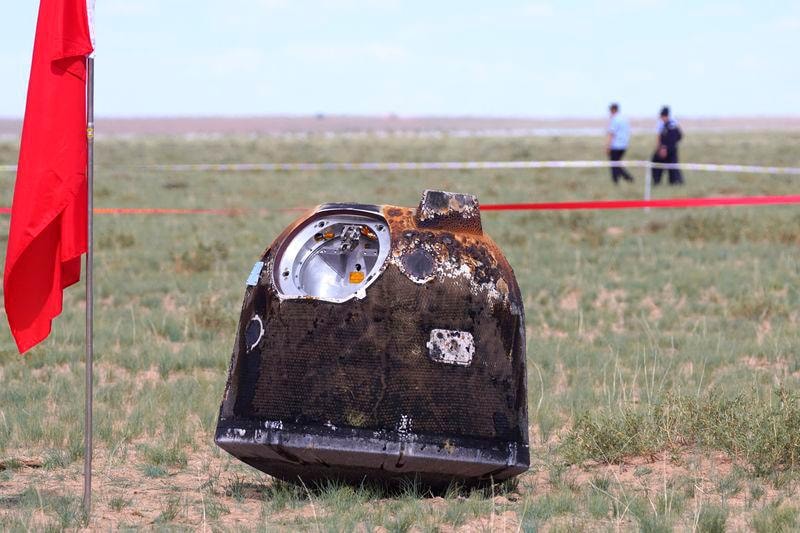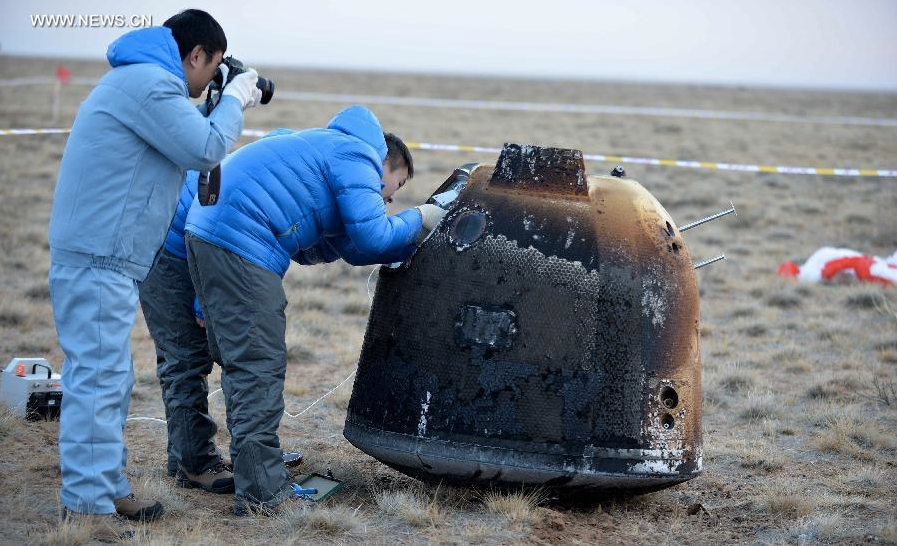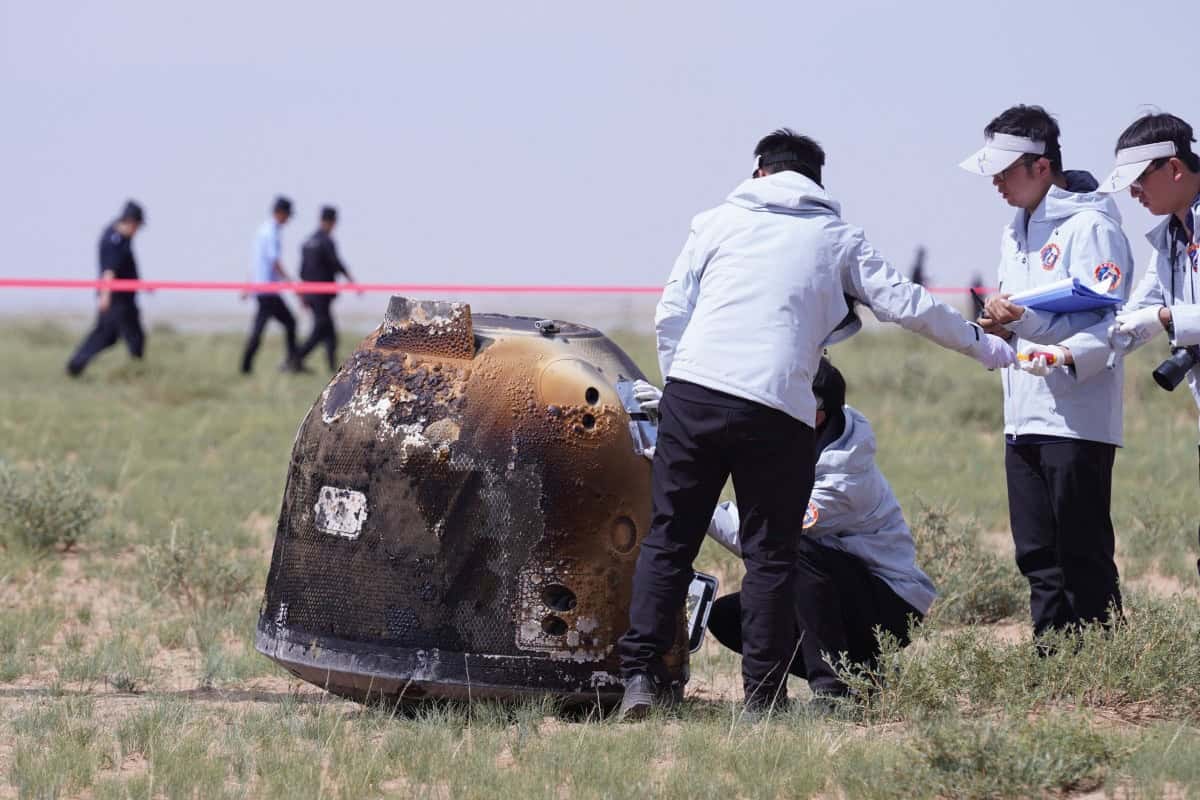Moon's soil landed on Earth
China's satellite Chang'e-6 brought the first soil samples from the far side of the Moon back to Earth. Having completed its mission, the capsule landed in Inner Mongolia. 
China has achieved another groundbreaking success for the Beijing Space Program. The satellite collected samples from the far side of the Moon and became the first country to bring them back to Earth. An uncrewed capsule carrying precious sand and soil samples parachuted to a landing site in the Siziwang Banner countryside of Inner Mongolia on Tuesday after being released into Earth orbit by the Chang'e-6 satellite.
MOON GODDESS ON MISSION
While samples from the Moon have sparked a wave of interest for space agencies and private companies considering sending missions to the Moon, or those aiming to build bases or even exploit its resources, another highly successful mission for the China National Space Administration (CNSA) has come to an end. Chang'e-6, named after the goddess of the Moon in Chinese mythology, was launched from Hainan province in South China on May 3. It landed on the side of the Moon that is not visible from Earth on June 2 during the first mission ever to collect rock and soil samples from the Moon's dark surface. Because the Moon tidally revolves around both itself and our planet, it shows only one side to Earth.
Using a robotic arm and drill, the mission's lander spent two days collecting rocks and soil from the 1600-mile-wide South Pole-Aitken (SPA) basin, one of the oldest and largest craters on the Moon. The ascent module then lifted off from the lunar surface and rendezvoused with the orbiter before beginning its journey home.
A TRUE TECHNOLOGICAL ACHIEVEMENT
Martin Barstow, Professor of Astrophysics and Space Science at the University of Leicester, speaking to The Guardian's Ian Sample:
- This is a great achievement by China, it's difficult to collect any samples from the Moon, but to collect these samples from the dark side, where communications are particularly difficult, has never been done before by any other organization. A real technological achievement.
A FIRST ON THE DARK SIDE
The US, China and the Soviet Union have collected samples from the Earth-facing side of the Moon, but China is the first country to bring material from the far side. The goal was to collect up to 2 kg of lunar rocks and soil.
And while China has previously collaborated with international scientists to study samples from the Earth-facing side of the Moon, it is unclear whether similar access will be given to the new material from the far side.
THE MOON WILL SHINE A LIGHT ON EARTH
The latest samples could shed light on long-standing mysteries in the early history of the Moon and Earth. Ian Crawford, professor of planetary science at Birkbeck, University of London, said analyzing and dating the samples is "one of the main aims" of lunar science because it will determine the timing of the formation of lunar craters.
Crawford added that understanding the speed at which large asteroids hit the moon in early times would shed light on Earth's impact history, adding that the same kind of asteroids hit our planet. If Chang'e-6 succeeds in taking samples deep enough to reveal the mantle of the Moon's dark side, it will be the subject of numerous analyses and theories.
The dark side of the Moon has fewer lava plains and a thicker crust than the side visible from Earth. Unprotected by the Earth, it has been subjected to violent impacts and therefore has more craters.
PLANNED FOR TEN YEARS
China has been preparing for this mission for more than a decade. The work is a step towards opening the International Lunar Research Base, which China will manage together with the Russian Space Agency Roscosmos. Speaking to The Guardian, Dr. Simeon Barber said of the giant step:
- "We are entering a new era of exploration. Analyzing samples from the dark side will help us understand the geological history of that region and why it is different from the Earth-facing side. This achievement is a milestone. Expert laboratories around the world have spent fifty years unlocking the moon's secrets from samples brought back by Apollo.
NEW MISSION IN 2026
China plans to continue its exploration activities on the Moon with new missions in the coming years. In this context, after Chang'i 6, Chang'i 7 missions are planned to explore the south pole of the Moon in 2026 and Chang'i 8 missions are planned in 2027 to verify natural resource capacity and availability and to conduct tests for the construction of a spaceport on the lunar surface.
China aims to organize manned expeditions to the Moon starting from 2030 and to lay the groundwork for further exploration activities by establishing an International Lunar Research Base.
































































